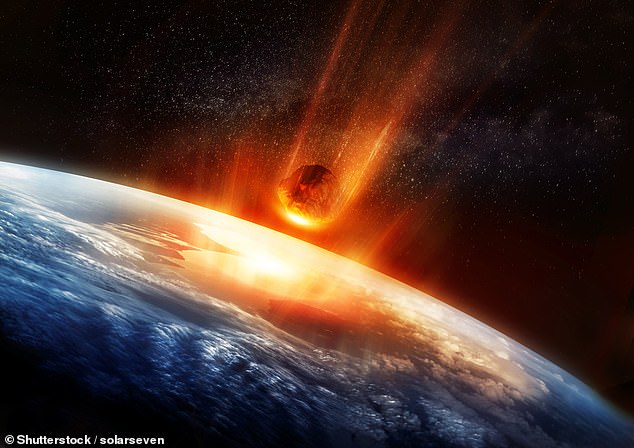
An ancient meteorite that crashed into Earth billions of years ago may have created the first life forms, a study claims.
The S2 meteorite, which was 200 times larger than the meteorite that caused the extinction of dinosaurs, is thought to have struck South Africa 3.26 billion years ago.
Researchers from Harvard University reported that evidence of the meteor impact remains in an area called the Barberton Greenstone Belt in southeastern Africa.
Despite the previous belief that meteorites of this size had completely decimated all life forms, the researchers discovered by analyzing rock samples that in this case it may have helped rebuild life on Earth.
In the aftermath of the crash, massive tsunamis pushed debris from the land into the ocean, stirring up iron from the seafloor.
Combined with the phosphorus from the S2 meteorite, the collision created ideal conditions for bacteria to thrive.
Nadja Drabon, an early Earth geologist at Harvard University and lead author of the study, said: ‘We view impact events as disastrous for life.
“But what this study highlights is that this impact would have had benefits for life, especially early on… this impact might even have allowed life to flourish.”
An ancient meteorite called S2 crashed in South Africa 3.6 billion years ago and may have spawned life on Earth
Researchers studied rock remains from the Barberton Greenstone Belt, known as one of the oldest and best preserved stretches of continental crust.
It lies on the eastern edge of the Kaapvaal Craton, which was once part of a supercontinent called Vaalbara that existed from 3.6 to 2.2 billion years ago before splitting into two separate continents.
The team collected 214 rock samples from 5 meters below where S2 impacted to 26 meters above the site in an area called Bruce’s Hill and Umbaumba.
They analyzed 83 samples for major, trace and rare earth elements, while other parts were analyzed for organic carbon isotopes that can be used to determine the origin and history of the object.
Their findings allowed researchers at Harvard University to piece together what happened when the meteor struck.
When the S2 meteorite – which was four times the size of Mount Everest – crashed into Earth, it set off a series of events that stimulated the formation of bacteria and the possible creation of all life.
After causing the massive tsunami that brought debris to the sea, the upper layer of the ocean began to boil, warming the atmosphere and creating a thick cloud of dust that blocked all sunlight.
Imagine you are standing off the coast of Cape Cod, in a shelf of shallow water. It is an energy-efficient environment, without strong currents,” Drabon said.
‘Then suddenly you have a gigantic tsunami that rushes past and tears open the seabed.’
This effectively stopped photosynthesis – the process used by plants, algae and some bacteria to convert water and carbon dioxide into oxygen using sunlight.
Despite this, researchers found that the impact caused the land to erode and bring up iron deep in the ocean, allowing iron-metabolizing bacteria to proliferate.
Although the impact was likely short-lived, their findings represent an important development in understanding how life began.
There are records of at least 16 major events involving extremely bright meteors that struck Earth and had serious environmental consequences, but their impact on early life is still not fully understood, the study said.
“The environmental effects of the S2 meteorite impact, and likely other large early Archean impacts, appear to have had mixed effects on early marine life,” the report continued.
“Some life forms were positively affected, while others faced greater challenges,” like the one that wiped out the dinosaurs.
The researchers concluded: ‘Our work suggests that early life on a global scale may have benefited from an influx of nutrients and electron donors, as well as novel environments, as a result of large impact events.’
